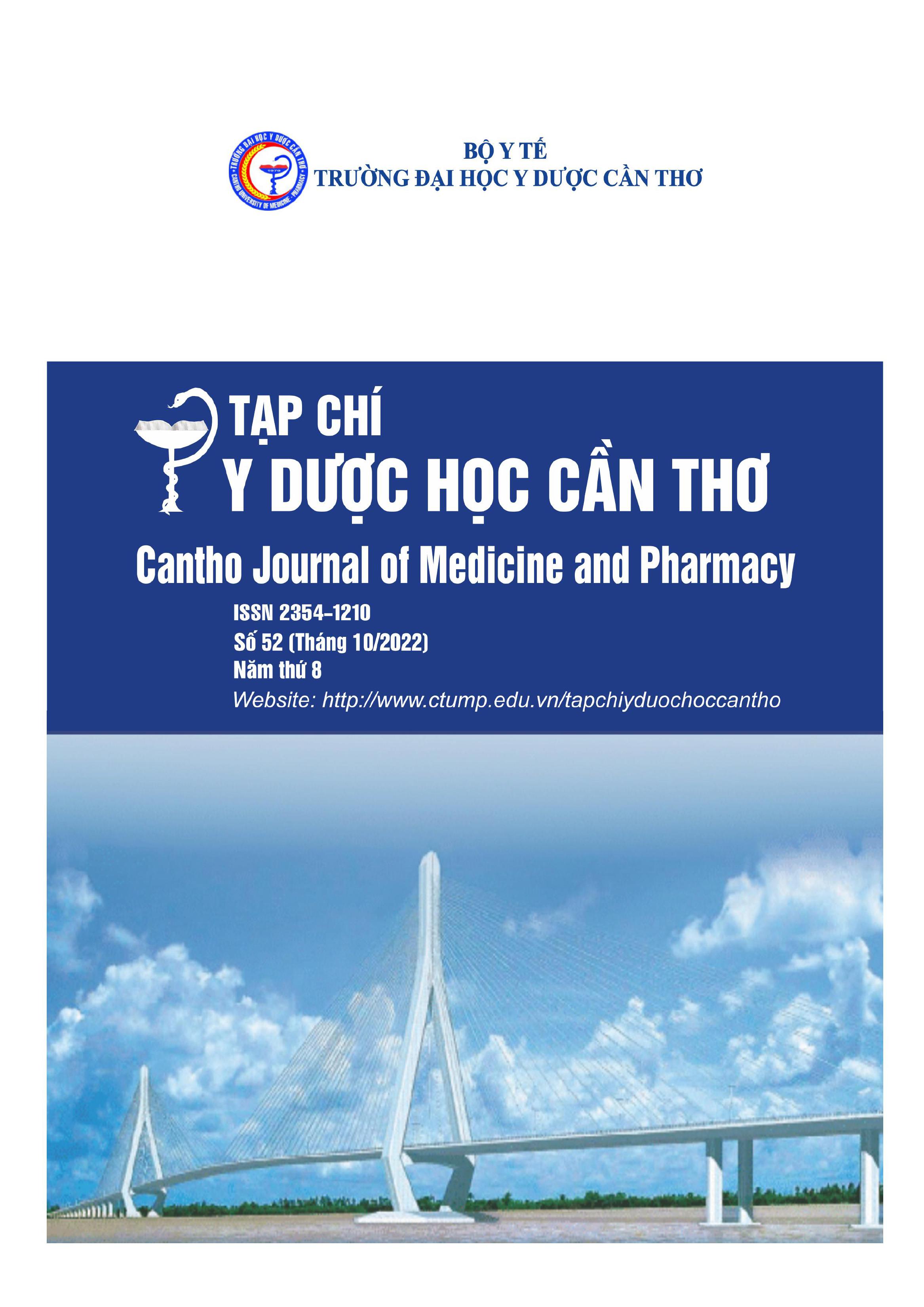THE USE OF BETA - LACTAM ANTIBIOTICS IN THE TREATMENT OF BRONCHIECTASIS AT VINH LONG TUBERCULOSIS AND LUNG DISEASE IN 2019 – 2020
Main Article Content
Abstract
Background: Bronchiectasis is a chronic, relatively common disease with an increasing incidence that can lead to many complications and a high risk of mortality. Currently, the inappropriate use of antibiotics is the cause of increasing antibiotic resistance and significantly increasing the cost of medical examination and treatment. Objectives: Study on the use of β-lactam antibiotics in the treatment of bronchiectasis at Vinh Long Tuberculosis and Lung Disease Hospital in the year 2019 – 2020. Materials and Methods: A retrospective descriptive cross-sectional study on bronchiectasis patients treated at Vinh Long Tuberculosis and Lung Disease Hospital from January 1, 2019, to December 31, 2020. Characteristics of antibiotic use and evaluation of rational use of βlactams in the treatment of bronchiectasis. Results: The highest rate of the penicillin group was 52.2%, (ampicillin/sulbactam 51,7%), cephem group 42,3% (ceftazidim 50,5%), carbapenem group had the lowest use rate of 5.5% (imipenem + cilastatin 95,2%). The rate of appropriate use in terms of dose, interval, and duration of antibiotic use accounted for a proportion of 77.1%, 60.3%, and 21.8% respectively. Conclusions: To have the most effective treatment and decrease antibiotic resistance, it is important to follow the instruction of the Health Ministry about the duration of antibiotics.
Article Details
Keywords
β-lactam antibiotics, bronchiectasis
References
2. Bộ Y tế (2020), Quyết định số 5631/QĐ-BYT, ngày 31/12/2020 về việc ban hành tài liệu Hướng dẫn thực hiện quản lý sử dụng kháng sinh trong bệnh viện, Nhà xuất bản Y học, Hà Nội.
3. Ngô Qúy Châu (2018), Bệnh học Nội Khoa tập 1, Nhà xuất bản Y học, Trường Đại học Y Hà Nội, tr. 71-77.
4. Nguyễn Văn Thành, Cao Thị Mỹ Thúy (2013), Phác đồ Điều trị và Quy trình Kỹ thuật Trong Thực hành Nội khoa Bệnh phổi, Nhà xuất bản Y học, Hà Nội, tr. 37-42. 3
5. Phạm Hùng Vân và Phạm Thái Bình (2013), Kháng sinh - Đề kháng kháng sinh kỹ thuật kháng sinh đồ các vấn đề cơ bản thường gặp, Nhà xuất bản Y học, Hà Nội.
6. Adam T Hill, Anita L Sullivan, James D Chalmers, et al. (2019), British Thoracic Society Guideline for Bronchiectasis in Adults, Thorax.
7. Amorim A., Meira L., Margarida, et al. (2019), Chronic Bacterial Infection Prevalence, Risk Factors, and Characteristics: A Bronchiectasis Population-Based Prospective Study, J. Clin. Med., 8(3), pp. 315, 2019.
8. Anne B Chang, Keith Grimwood, Colin F Robertson, et al. (2012), Antibiotics for Bronchiectasis exacerbations in Children: Rationale and Study Protocol for a Randomised Placebo – controlled Trial, Trials journal.
9. Felix C. Ringshausen, Andres de Roux, Mathias W. Pletz, et al. (2013), Bronchiectasis – Associated Hospitalizations in Germany, 2005-2011: A Population – Based Study of Disease Burden and Trends, Plos one, 8(8).
10. Jarab F., Jarab S. A., Mukattash T., et. al (2020), Antibiotic dosing adjustments in patients with declined kidney function at a tertiary hospital in Jordan, International Journal of Clinical Practice, 74.
11. Huang H. Y., Chung F. T., Lo C. Y., et al. (2020), Etiology and characteristics of patients with bronchiectasis in Taiwan: A cohort study from 2002 to 2016, BMC Pulm. Med., vol. 20, no. 1, pp.1-11.
12. Vikas Goyal, Keith Grimwood, Catherine A Byrnes, et al. (2018), Amoxicilin–clavulanate versus azithromycin for respiratory exacerbations in children with bronchiectasis (BEST-2): a multicentre, double-blind, non-inferiority, randomised controlled trial, Lancet, 392, pp. 1197-206.
13. Verbeeck R. K., Musuamba F. T. (2009), Pharmacokinetics and dosage adjustment in patients with renal dysfunction, Eur J Clin Pharmcol, 65(8), pp.757-73.


